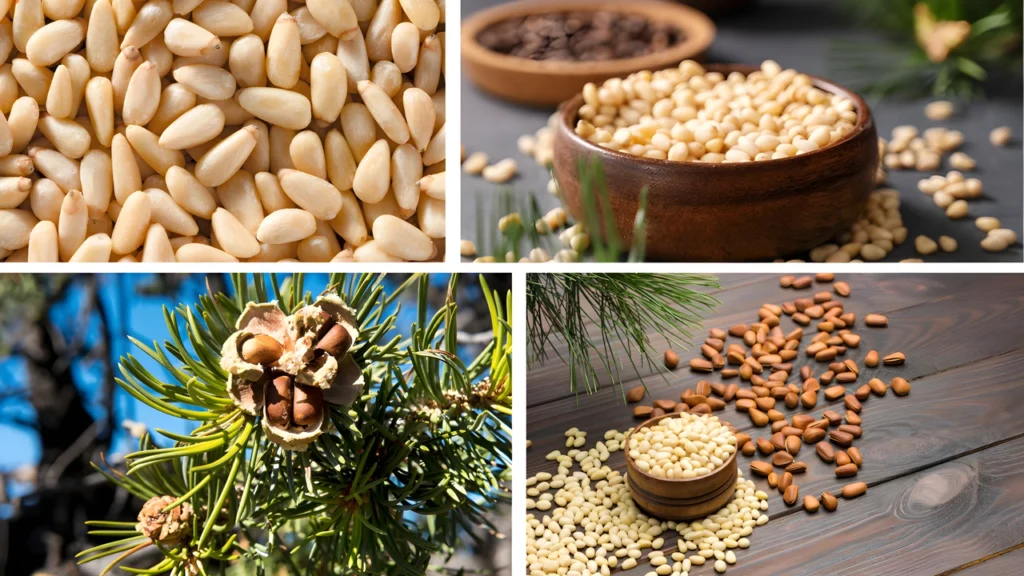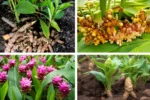Join on WhatsApp
Get the latest updates directly on WhatsApp – motivation, news & more!
Pine nuts, also known as pignoli or pinon, have been cherished for centuries as a highly nutritious, flavorful, and versatile ingredient. Whether tossed into salads, blended into pesto, or eaten raw, pine nuts offer an earthy richness that’s difficult to match. But many people don’t realize that it’s entirely possible to grow, harvest, store, and enjoy this ancient superfood at home. In this ultimate guide to pine nuts, you’ll learn everything a home grower or health enthusiast needs to know—from planting pine trees to cracking the cones and storing the seeds for long-term use. This isn’t just about pine nuts as a food; it’s about reclaiming an ancient, sustainable superfood from your own backyard.

1. Understanding Pine Nuts as an Ancient Superfood
Before diving into how to grow, harvest, store, and enjoy pine nuts at home, it’s essential to understand their historical and nutritional significance. Pine nuts are the edible seeds of pine trees, particularly from species like the Stone Pine (Pinus pinea), Colorado Pinyon (Pinus edulis), and Korean Pine (Pinus koraiensis).
These ancient superfoods have been consumed by humans for thousands of years. Indigenous communities across Europe, Asia, and the Americas relied on pine nuts as a dense source of calories, fats, and protein—especially during harsh winters.
Nutritionally, pine nuts are loaded with magnesium, iron, vitamin E, and monounsaturated fats. They are also a rich source of antioxidants and omega-3 fatty acids, making them a heart-healthy addition to any diet.
2. How to Grow Pine Nuts at Home: From Seed to Tree
Growing pine nuts at home may sound like a long-term investment—and it is. However, with patience and the right approach, you can begin your own sustainable supply of this ancient superfood in your backyard. To grow pine nuts at home, you’ll need to start with the right species.
| Pine Tree Species | Suitable for Home Growing | Time to Nut Production |
|---|---|---|
| Stone Pine (Pinus pinea) | Yes (Mediterranean climates) | 6–10 years |
| Pinyon Pine (Pinus edulis) | Yes (dry, rocky soil) | 10–15 years |
| Korean Pine (Pinus koraiensis) | Yes (cold climates) | 10–12 years |
Steps to Grow Pine Nuts at Home:
- Choose the Right Species: Select a species suitable for your local climate and space.
- Start from Seed or Sapling: Seeds can take longer but are cost-effective; saplings save time.
- Plant in Well-Drained Soil: Pine trees dislike overly wet conditions.
- Ensure Full Sunlight: Pine trees thrive in bright, open spaces.
- Water Regularly (First 2–3 Years): Once established, pine trees are drought-tolerant.
Though they take years to produce, pine trees offer shade, aesthetics, and environmental benefits in the meantime.
3. How to Harvest Pine Nuts from Your Homegrown Trees
Once your tree matures, it’s time to harvest pine nuts. Learning how to harvest pine nuts at home is an essential part of this ultimate guide and allows you to finally enjoy the fruits of your labor.
Pine nuts are hidden inside the cones of mature trees. Cones usually ripen and open during late summer to early fall, depending on the species and local climate.
Steps to Harvest Pine Nuts:
- Watch for Ripening Cones: Mature cones turn brown and begin to open slightly.
- Pick Cones Carefully: Use gloves to protect hands from sharp scales.
- Dry the Cones: Spread them out in a sunny, dry location for 2–3 weeks. As they dry, the cones will open and release seeds.
- Extract the Seeds: Shake or tap the cones gently to release the pine nuts.
- Remove the Shells: Pine nuts have a hard outer shell that must be cracked before eating.
Harvesting pine nuts can be time-consuming, but it’s deeply satisfying to collect and enjoy this ancient superfood straight from your own tree.
4. How to Store Pine Nuts for Long-Lasting Freshness at Home
Proper storage is key to preserving the flavor, texture, and nutrition of pine nuts. Since pine nuts are high in natural oils, they can go rancid quickly if not stored correctly. That’s why this ultimate guide to pine nuts must include careful instructions on how to store them.
Best Practices for Storing Pine Nuts at Home:
| Storage Method | Duration | Tips |
|---|---|---|
| Room Temperature | 1–2 weeks | Store in airtight container away from heat/light |
| Refrigerator | 1–2 months | Use glass jar with tight lid |
| Freezer | 3–6 months | Vacuum-seal for best results |
Always smell pine nuts before use—if they have a bitter or sour smell, they may have gone bad. When stored properly, pine nuts retain their creamy texture and mild flavor, ready to use in recipes or as a nutritious snack.
5. How to Enjoy Pine Nuts: Delicious Ways to Use This Ancient Superfood
After all the effort to grow, harvest, and store them, it’s time to enjoy pine nuts in your daily meals. One of the best things about pine nuts is their versatility. They can be eaten raw, roasted, or blended into dishes to add depth and flavor.
Popular Ways to Enjoy Pine Nuts at Home:
- Classic Pesto Sauce: Blend pine nuts with basil, garlic, parmesan, and olive oil.
- Salad Toppings: Lightly toast and sprinkle over green or grain salads.
- Baked Goods: Add to breads, muffins, and cookies for a nutty twist.
- Stuffed Vegetables: Mix with rice, herbs, and spices for hearty stuffing.
- Energy Snacks: Combine with dried fruits and dark chocolate for homemade trail mix.
Pine nuts offer a delicate buttery flavor and soft crunch that elevates both savory and sweet dishes. They are an excellent plant-based protein and energy source, aligning well with modern superfood diets.
6. Benefits of Growing and Enjoying Pine Nuts at Home
A big reason to grow, harvest, store, and enjoy pine nuts at home is the holistic benefit it brings—not only to your health but also to the environment and your wallet.
Key Benefits:
- Health: Rich in vitamins, healthy fats, and antioxidants.
- Sustainability: Reduce your carbon footprint by growing at home.
- Cost-Efficiency: Store-bought pine nuts are expensive; growing them is an investment.
- Self-Reliance: Enjoy the satisfaction of producing your own superfood.
- Family Activity: Growing pine nuts can be a long-term gardening project for families.
This ultimate guide isn’t just about nutrition—it’s also about reconnecting with food and nature in a mindful, sustainable way.
7. Challenges and Tips: What to Expect When Growing Pine Nuts at Home
While this guide aims to inspire, it’s also important to be realistic. Growing pine nuts at home is a long-term commitment and comes with a few challenges.
Common Challenges:
- Slow Growth: Most trees take 6–15 years to produce.
- Space Requirements: Pine trees need ample room to grow.
- Pest and Wildlife: Squirrels, birds, and insects love pine cones too.
- Shelling Difficulty: Extracting nuts can be labor-intensive.
Tips for Success:
- Plant more than one tree to increase pollination and yield.
- Use netting or fencing to protect cones.
- Learn hand-shelling techniques or invest in small tools.
- Be patient—this superfood is worth the wait!
Despite these challenges, many home gardeners find that the long-term rewards far outweigh the initial hurdles.
Conclusion: Why This Ultimate Guide to Pine Nuts Matters for Home Growers and Health Seekers
This ultimate guide to pine nuts has walked you through every essential step to grow, harvest, store, and enjoy this ancient superfood at home. From selecting the right pine species and planting them in your garden to harvesting the mature cones and transforming them into nutrient-rich meals, pine nuts offer a rich, rewarding experience for those willing to invest the time and care.
Whether you’re motivated by the nutritional benefits, the satisfaction of sustainable living, or the joy of growing your own food, pine nuts provide an incredible return on investment. More than just a garnish or a luxury ingredient, they connect you with traditions that span millennia. By growing, harvesting, storing, and enjoying pine nuts at home, you’re not just cultivating trees—you’re nurturing wellness, sustainability, and a deeper appreciation for the natural world.


